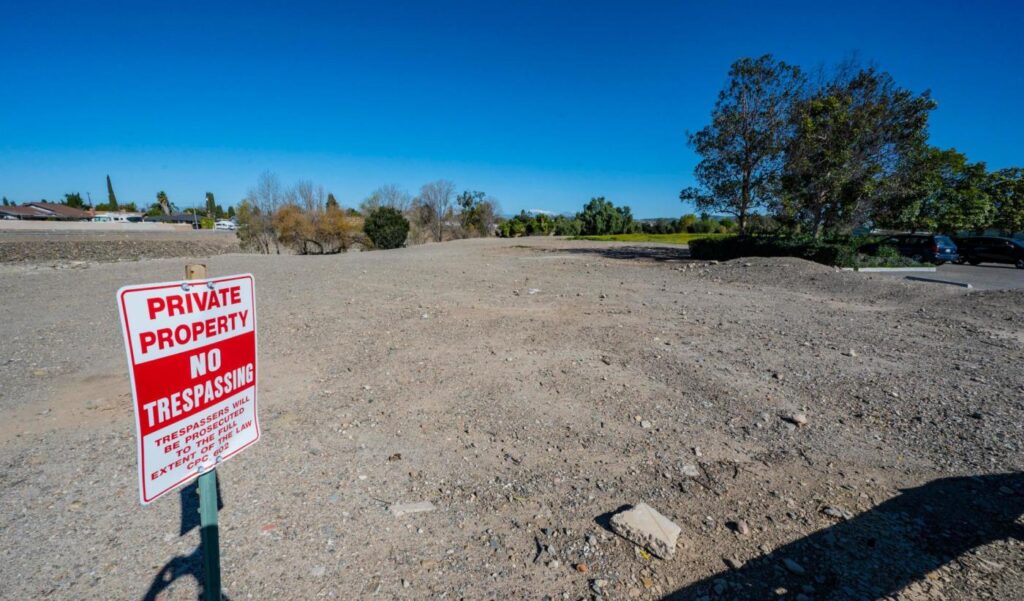
The California Department of Housing and Community Development rejected the city of Orange’s housing plan last week, saying it includes too many developed parcels that are unlikely to be transformed into housing by the end of the decade.
An existing hotel, a public charter school, a sheriff’s training facility and numerous shopping centers are among the reportedly encumbered parcels in the city’s site inventory. Deed restrictions, easements, leases or other declarations likely would block residential development on those sites, a Friday, April 14, letter to the city said.
The decision reverses earlier statements that state housing officials likely would approve the city’s so-called “housing element” if resubmitted with suggested revisions.
But state officials changed course after a developer’s attorney and pro-housing groups challenged the plan, saying it’s unlikely to meet a state-mandated housing goal of 3,936 new homes by 2030.
“Specific information was not included (in the plan) on the extent to which (existing uses) could impede new residential development,” Melinda Coy, a state housing accountability chief, said in the April 14 letter. “The city may need to amend the housing element.”
Aaron Schulze, an assistant to the city manager, said in an email Friday the city “thoroughly addressed all of HCD’s criteria” when it resubmitted its revised housing plan on Feb. 15.
“Obviously, we are disappointed in the letter received today from HCD,” Schulze said Friday. “The city maintains that the adopted housing element substantially complies with state law.”
Under a 53-year-old statute, local governments are required to submit new plans periodically spelling out where homes can be built to meet future needs. Each city and county is required to provide its fair share of low-income housing as part of its plan.
State and regional planning agencies determine housing goals for each jurisdiction based in part on state population projections, current levels of overcrowding and the number of residents overpaying for housing.
Faced with a prolonged housing shortage, the state and the Southern California Association of Governments determined that Orange needs to plan for 11 times the number of new homes than during the 2013-21 planning period. Orange’s new housing target thus jumped to 3,936 new homes by October 2029. Of those, 2,348 must be affordable to low- or moderate-income residents.
As of Monday, just half of the region’s 191 cities and six counties had approved housing elements, which were due 18 months ago. Jurisdictions failing to adopt housing elements on time face such sanctions as lawsuits, loss of state funding, a state takeover of planning and building decisions and fines up to $600,000 per month.
Another consequence is the “builder’s remedy,” which requires cities without a “substantially compliant” housing element to approve almost any housing development that includes affordable units almost anywhere in the city, regardless of zoning.
Orange already received two such builder’s remedy applications.
A Los Angeles law firm representing one of those builder’s remedy applicants sent letters to the state saying 89% of Orange’s needed homes are on 11 sites encumbered by deed restrictions, easements and other impediments.
“Contrary to the city’s claims, there is no realistic or demonstrated potential for the development of 3,522 residential units (including 862 claimed lower and very low income units) on the non-vacant sites identified in the city’s … sites inventory,” Allan Abshez of the Loeb and Loeb law firm said in an April 3 letter to the state.
The encumbered sites include the Outlets at Orange, the Orange Town & Country shopping center, the Stadium Promenade shopping center and the City Town Center, Abshez and the state said.
They also include the Orange County Classical Academy, a public charter school with more than 500 students; an Ayres Hotel on Chapman Avenue; and an Orange County Sheriff’s training facility whose use will “be continued indefinitely,” Abshez’ letter said.
“Plainly,” Abshez wrote, “the city made no effort to conduct an analysis of any existing leases or other contracts that would perpetuate the existing use or prevent redevelopment of these sites.”
Other pro-housing groups also sent letters criticizing the city’s housing element.
“It is clear that the city does not have adequate sites to meet its (state housing goals),” wrote Matthew Gelfand, an attorney for the nonprofit group, Californians for Homeownership, which has sued about a dozen California cities over their housing elements. “The city’s reason for doing this is obvious: it would prefer to list sites where development is unlikely rather than accommodating developers who actually desire to develop housing projects in the city.”
The city is including “non-viable” sites in its plan while ignoring the two plots where builder’s remedy applicants want to build townhomes and apartments, wrote Elizabeth Hansburg, director of People for Housing Orange County, a pro-housing Yes In My Backyard, or YIMBY, group.
“The city of Orange has included non-viable sites in its housing element sites inventory, while viable housing sites that have active interest from developers are not included,” Hansburg wrote.
Coy, the state accountability chief, wrote that Orange planners need to go back to the drawing board.
“The city should either provide additional analysis demonstrating that these uses are likely to discontinue in the (2021-29) planning period or remove these sites from the inventory,” Coy wrote.
